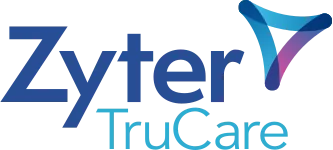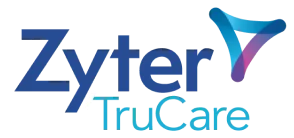Patient engagement is a cornerstone of effective healthcare delivery, directly influencing outcomes, satisfaction, and efficiency. Yet, nearly 9 out of 10 adults in the United States struggle to understand and use health information, creating a significant barrier to informed decision-making and self-management. This lack of health literacy not only affects individual patients but also places immense pressure on healthcare systems, contributing to higher costs, preventable hospitalizations, and reduced care quality.
Overcoming these challenges requires a comprehensive approach that integrates advanced communication techniques, self-management support programs, and innovative technology. By addressing these barriers, healthcare organizations have a unique opportunity to empower patients and providers while enhancing overall care delivery.
Overcoming Challenges in Engagement and Literacy
One of the most pressing challenges in patient engagement is the pervasive issue of health literacy. Many patients face difficulties navigating medical jargon, complex treatment plans, and health data. Without personalized communication or accessible resources, these barriers often leave patients feeling disconnected and less engaged.
Research shows that personalized strategies are essential for improving patient activation—the skills and confidence needed to engage in one’s care. Patients with higher activation levels consistently experience better outcomes, but achieving this requires tailored approaches that resonate with individual needs.
Technology also plays a critical role, yet fragmented systems and usability challenges can limit its effectiveness. While tools like patient portals and remote patient monitoring (RPM) devices hold promise, their potential is often unrealized without seamless integration and user-friendly design.
Key Challenges Include:
- Health Literacy as a Barrier: Limited health literacy prevents patients from fully understanding or participating in their care. Tailored communication methods, such as teach-back techniques and visual aids, have proven to significantly improve comprehension.
- Limited Personalization in Communication: Generic communication strategies fail to engage diverse populations effectively. Tailoring interactions to reflect individual preferences, cultural backgrounds, and languages builds trust and improves engagement.
- Chronic Disease Management: Managing chronic conditions requires patients to take an active role in their care, yet many lack the resources or confidence to self-manage effectively. Expanding access to self-management support programs can address this gap.
- Technological Gaps in Implementation: Fragmented systems and usability challenges reduce the effectiveness of digital health tools. Integrated platforms that unify tools like RPM, electronic health records (EHRs), and patient portals create a cohesive experience for both patients and providers.
Unlocking Opportunities for Better Engagement
While challenges persist, the healthcare industry has significant opportunities to enhance patient engagement and health literacy through a proactive, patient-centered approach. Communication strategies that reflect patients’ diverse needs are a foundational element of this transformation. Culturally and linguistically appropriate materials have been shown to improve comprehension and trust, critical drivers of engagement.
Integrated digital platforms also play a pivotal role. By unifying tools like RPM, patient portals, and EHRs into a seamless ecosystem, healthcare organizations can improve accessibility and empower patients to take an active role in their care.
Effective Strategies Include:
- Focusing on culturally relevant communication to ensure inclusivity and foster trust.
- Creating integrated digital platforms that simplify access to actionable health information.
- Empowering providers with advanced communication tools and training to support timely interventions.
- Expanding self-management support programs to help patients build confidence in managing chronic conditions.
How Zyter|TruCare Delivers Solutions
Zyter|TruCare addresses these challenges with its TruCare® Population Health platform, a unified system that empowers providers and patients alike.
At the core is the TruCare® Virtual Health platform, which enables care teams to access real-time dashboards and historical views of health metrics like blood pressure and glucose levels. With features like clinical alerts, time-tracking, and automated billing, the portal streamlines workflows and supports proactive, personalized care. You can link to your own educational content or leverage our robust library of materials
The TruCare Patient App empowers patients with tools for secure communication, video calls, and appointment management. It also offers access to educational content, condition-specific care pathways, and engaging features like health surveys to improve adherence and confidence in self-management. However, the patient app is not required to effectively use the Virtual Health Platform, you may opt for your patient’s not to have another app.
With TruCare RPM, patients can track their health from home using FDA-approved devices. Real-time clinical alerts and inactivity notifications allow providers to intervene early, improving outcomes for use cases ranging from chronic care to maternal health.
All these tools are embedded in the TruCare® Virtual Health platform, which integrates seamlessly with third-party systems to support remote monitoring, virtual visits, and ongoing engagement. This holistic approach ensures that healthcare organizations can address the dual challenges of health literacy and engagement while achieving better outcomes.
Delivering Better Outcomes
Improving patient engagement and health literacy is essential to advancing value-based care and achieving better outcomes. By addressing these challenges with a strategic, patient-centered approach, healthcare organizations can empower patients, support providers, and enhance care delivery across the continuum.
Zyter|TruCare provides the tools to meet these demands, offering a unified platform that prioritizes accessibility, personalization, and collaboration. Together, these innovations pave the way for a healthcare future where every patient is informed, engaged, and empowered to take control of their health.









